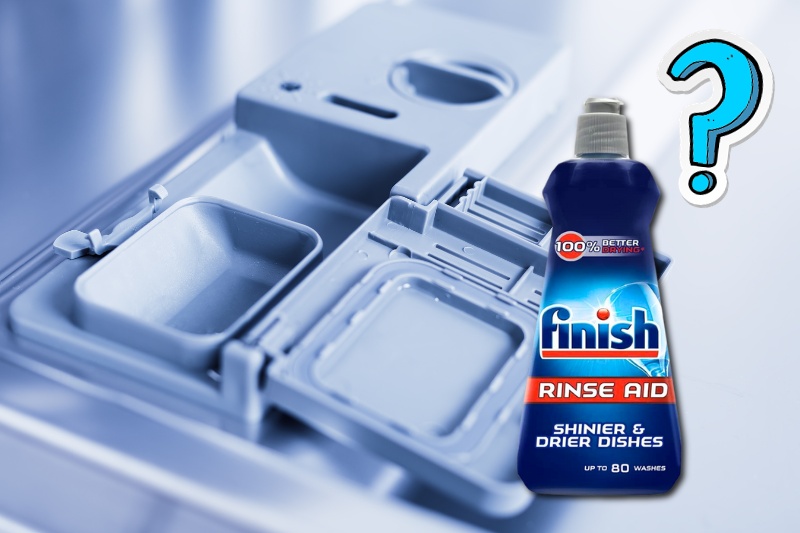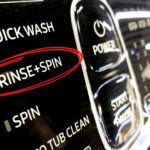Rinse aid is a crucial player in achieving optimal results from your dishwasher. But to positively impact the cleaning and drying process, you need to put the right amount of rinse aid in the right place in your dishwasher when the levels run low.
If you’re asking questions like “Where does rinse aid go?” and “When does my dishwasher need rinse aid?” you’re in safe hands.
This article dives into the specifics of where rinse aid should go in your dishwasher, shedding light on how this often underestimated component can significantly enhance the power of your dishwasher.
Join us as we explore the ins and outs of rinse aid usage, ensuring that your dishes emerge from the wash cycle gleaming and spotless.
Where Do You Put Rinse Aid in the Dishwasher?
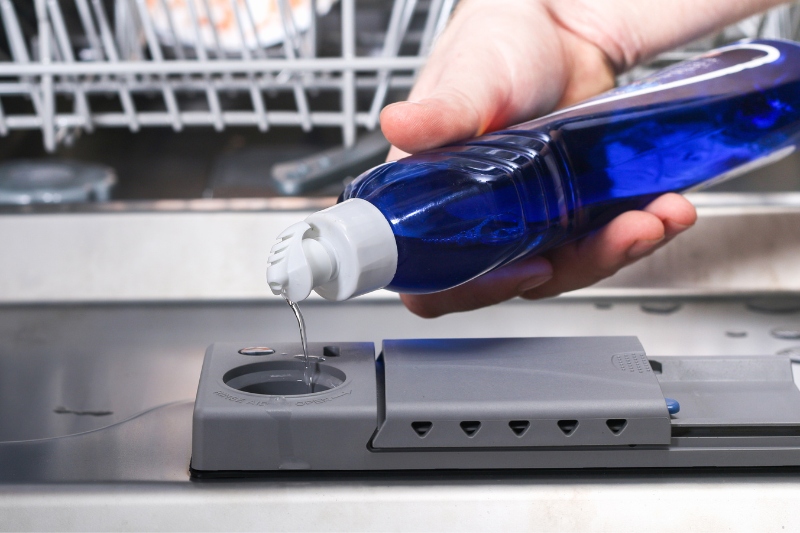
There is typically a designated compartment in your dishwasher where rinse aid goes.
The exact location of the rinse aid dispenser may vary depending on the make and model of your dishwasher, but it is typically located near the detergent dispenser.
Here are the general steps to locate the dispenser and add rinse aid to your dishwasher:
- Locate the rinse aid dispenser: Open your dishwasher door and look for a small compartment or cap labelled “Rinse Aid” or a star-shaped rinse aid symbol. It’s often on the inside of the dishwasher door, near the detergent dispenser.
- Open the dispenser compartment: If there’s a cap or cover on the rinse aid dispenser, open it by turning it counterclockwise or by flipping it open, depending on the design. Refer to your dishwasher instruction manual for help if necessary.
- Pour in rinse aid: Carefully pour the rinse aid into the dispenser compartment until it is full. Then, close the dispenser compartment by replacing the cap or cover and turning it clockwise or securing it as per the design of your dishwasher.
How Do You Know When the Rinse Aid Compartment Is Full?
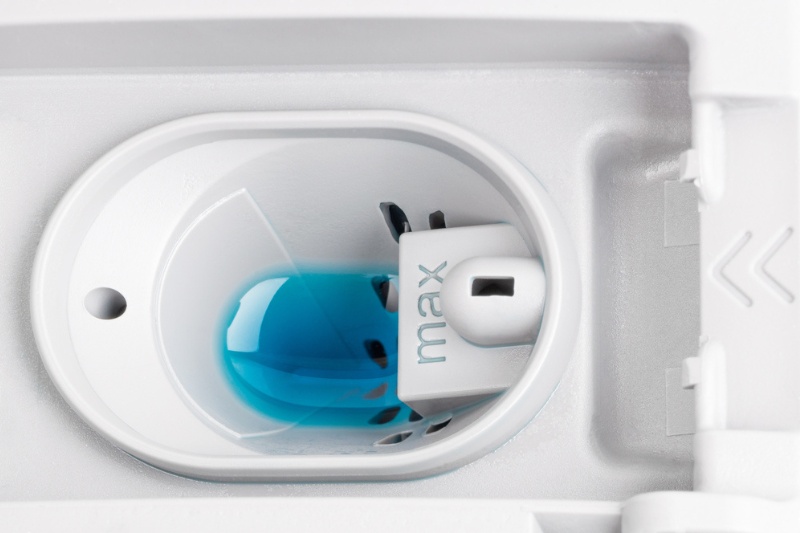
As you might have noticed in step three, you must pour rinse aid into your dishwasher until the compartment is full.
In fact, it’s essential to avoid overfilling the rinse aid dispenser, as this can lead to issues with excessive sudsing or streaking on your dishes.
Determining when the rinse aid dispenser is full can vary slightly depending on the specific model.
Refer to the user manual for specific instructions on using your particular dishwasher.
The manual may provide detailed information and illustrations regarding the rinse aid compartment and its maximum capacity.
Some more general indicators to assess the level of rinse aid in the dispenser are listed below:
- Rinse aid indicator or window: Some dishwashers have a rinse aid indicator or a small window on the dispenser that allows you to see the rinse aid level. The compartment is full when the rinse aid level is visible at the top of the window.
- Maximum fill line: Most rinse aid dispensers have a maximum fill line marked on the inside or outside. It’s important not to exceed this line to prevent overfilling. The dispenser is considered full once you’ve poured rinse aid up to this line.
- Trial and observation: Initially, you may need to observe how much rinse aid the dispenser can hold and estimate when it’s full based on usage and the time between refills. Regularly checking the dispenser and noting when you last filled it can help establish a pattern.
How Do I Know When My Dishwasher Needs Rinse Aid?
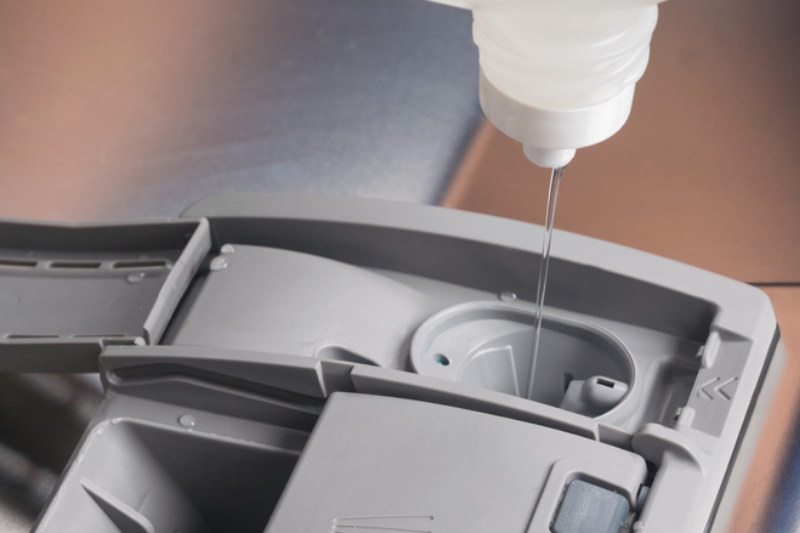
Knowing not only where to put rinse aid but also when it needs topping up is crucial for optimal dishwasher performance.
Here are some signs and indicators that suggest it’s time to refill the rinse aid dispenser:
- Rinse aid indicator light or display: Some modern dishwashers have an indicator light or display that alerts you when the rinse aid is low or empty. This light or display will typically illuminate or change to indicate the need for a refill.
- Visible level in dispenser window: If your dishwasher has a clear rinse aid dispenser window, you can visually check the level of rinse aid. When the level is low, it will be visible through the window, signalling the need to top the rinse aid up.
- Increased water spots or streaks: One of the primary purposes of rinse aid is to prevent water spots or streaks on your dishes by aiding in the drying process. If you notice an increase in spots or streaks, it may be a sign that the rinse aid needs replenishing.
- Dishes not drying well: If your dishwasher is not drying dishes properly, it could be due to insufficient rinse aid. An adequate amount of rinse aid helps the water slide off your dishes, promoting faster drying.
- Extended period since last refill: If it’s been a while since you last refilled the rinse aid dispenser, it’s a good practice to check the level. The frequency of refills will depend on your dishwasher’s capacity and how often you run it, but a weekly check can be a good habit.
Is Rinse Aid Really Necessary?

Rinse aid is not an absolute necessity for running a dishwasher. Still, it can significantly improve the overall performance of your dishwasher in terms of cleaning and drying your dishes.
Here are the key advantages rinse aid has in a dishwasher:
- Improved drying: Rinse aid helps water sheet off dishes, glassware, and utensils, which aids in drying. This is especially important for dishwashers that don’t have a built-in drying element or use a lower-temperature drying cycle.
- Faster drying times: Dishwashers can dry plates and glasses faster with rinse aid. This is useful in all households but can be particularly beneficial for busy families or commercial kitchens/bars that need to use dishes shortly after a wash cycle.
- Reduced water spots and streaks: Rinse aid prevents water droplets from forming and leaving spots or streaks on your dishes during the drying process. It helps maintain the appearance and cleanliness of your items.
- Enhanced cleaning: Rinse aid can assist in the cleaning process by breaking down and preventing food residues and mineral deposits from adhering to your dishes. This can help ensure more thorough cleaning.
While rinse aid provides these benefits, some homeowners are satisfied with the drying performance of their dishwashers or don’t mind manually drying their dishes.
Additionally, some newer dishwasher models are designed to perform well without rinse aid. So, ultimately, whether to use rinse aid or not is a personal choice.
If unsure, you can use your dishwasher without rinse aid for a few cycles and observe the results.
If you find that your dishes aren’t drying well or are plagued by water spots, you can then try adding rinse aid to see if it improves the performance to your satisfaction.
Do You Still Need Rinse Aid with All-In-One Tablets?
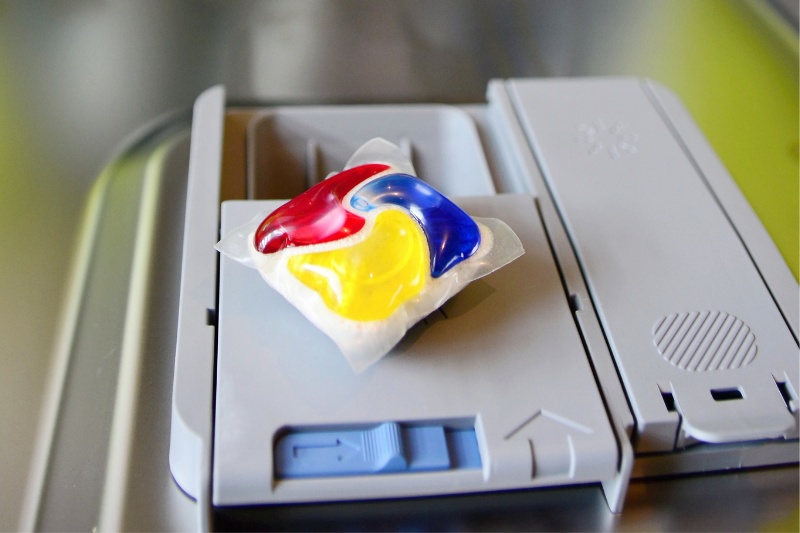
If you want the benefits of rinse aid without the confusion about where rinse aid goes or how often you need to refill the dispenser, all-in-one tablets are a good compromise. These special dishwasher tablets include a combination of detergent, rinse aid, and sometimes salt.
The rinse aid component in these tablets is formulated to aid in the drying process and reduce water spots and streaks on your dishes—just as liquid rinse aid does.
Whether you need to use additional rinse aid alongside all-in-one tablets depends on your specific dishwasher, water hardness, and personal preferences:
- Dishwasher compatibility: Some dishwashers are designed to work optimally with all-in-one tablets and will not require additional rinse aid.
- Hard-water areas: If you live in a hard water area, using a separate rinse aid in addition to all-in-one tablets is recommended. It can further improve drying performance and reduce the impact of hard water deposits on your dishes.
- Personal preference: Some people prefer using rinse aid in addition to all-in-one tablets to achieve optimal drying and spot-free results. Others may find the tablets alone are enough.
It’s important to note that using too much rinse aid can lead to over-sudsing or streaking.
If you choose to use rinse aid alongside all-in-one tablets, follow the instructions provided by the manufacturer of the rinse aid and your dishwasher. This should help you maintain a balanced amount or rinse aid for optimal washing and drying.

Hannah has a passion for cleaning. She worked her way around Australia by cleaning hostels in exchange for free accommodation and used her cleaning skills to bag a job as a chalet host for a luxury ski company in France.
